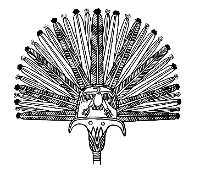

| Rinaldo in the garden of Armida, Louis XV.skin mount, stick mother of pearl, guards jewelled,given by King William IV to Augusta, Duchess of Cambridge& left by her to her grand-daughter Victoria Mary. | H.R.H. the Princess of Wales. |
HISTORY OF THE FAN
This edition is limited to 450 copies
for sale in Europe and the British
Dominions, of which this isNo. 93.
HISTORY OF
THE FAN
BY G. WOOLLISCROFT RHEAD
R.E.; HON. A.R.C.A. LOND.; AUTHOR OF ‘THE PRINCIPLES
OF DESIGN’; ‘A HANDBOOK OF ETCHING’; ‘THE TREATMENT
OF DRAPERY IN ART’; ‘STUDIES IN PLANT FORM’;
‘CHATS ON COSTUME,’ ETC.; JOINT AUTHOR OF
‘STAFFORDSHIRE POTS AND POTTERS’;
‘BRITISH POTTERY MARKS’

LONDON
KEGAN PAUL, TRENCH, TRÜBNER & CO. Ltd.
DRYDEN HOUSE, GERRARD STREET, W.
1910
Edinburgh: T. and A. Constable, Printers to His Majesty
DEDICATED
(BY GRACIOUS PERMISSION)
TO
HER ROYAL HIGHNESS THE PRINCESS OF WALES
PUBLISHERS’ NOTE
THE majority of the blocks in this work weremade direct from the actual Fans by Messrs.John Swain and Sons, to whom the Publishers areindebted for the skill and ingenuity with which theyhave overcome the many special difficulties incidentalnot only to the subjects themselves, but to the conditionsunder which many of those in private houses had tobe reproduced.
The Colour Plates are printed by Messrs. EdmundEvans.
The block of the Fan Mount by Rosa Bonheurwas made by Mr. F. Jenkins in Paris.
The block of the Japanese Fan Mount, The TamagawaRiver, is by the Grout Engraving Company.
The lithograph of Bacchus and Ariadne is byMessrs. Martin, Hood and Larkin.
PREFACE
 IT is, perhaps, a little singular that up to the presentno work making any pretension to completeness hasappeared in English dealing with that little instrumentso intimately associated with both civil and religiouslife of the past, the Fan. Even on the Continent theliterature of the Fan is exceedingly scanty. M. Blondel’swork, Histoire des Éventails, published in 1875, is but sparsely illustrated,and is mainly based upon the researches of M. Natalis Rondot,whose Rapport sur les objets de Parure was undertaken at the instanceof the French Government in 1854. An English translation of M. OctaveUzanne’s brilliant sketch appeared in 1884, and is unillustrated exceptby fanciful border design
IT is, perhaps, a little singular that up to the presentno work making any pretension to completeness hasappeared in English dealing with that little instrumentso intimately associated with both civil and religiouslife of the past, the Fan. Even on the Continent theliterature of the Fan is exceedingly scanty. M. Blondel’swork, Histoire des Éventails, published in 1875, is but sparsely illustrated,and is mainly based upon the researches of M. Natalis Rondot,whose Rapport sur les objets de Parure was undertaken at the instanceof the French Government in 1854. An English translation of M. OctaveUzanne’s brilliant sketch appeared in 1884, and is unillustrated exceptby fanciful border design